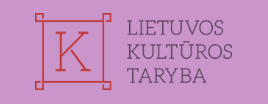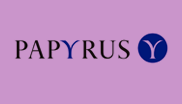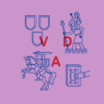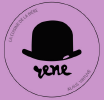bookface
A book is judged by its face. It might be theface (cover) of the book, the face of a reader, the face of a publisher, the face of a writer or a reviewer’s face. Which face of the book is the most precise – the one created by the author, promised by the publisher, or perceived by the reader?
October 27, 2018 Arts Printing House (Šiltadaržio st. 6, Vilnius)
Focusing on this year’s theme – book cover/face in its various forms – a group of well-established, award-winning international designers, artists and creatives will share their book cover design insights, observations, and experiences. Discussing meanings and creative processes, searching for the best possible design solutions, and revealing details from behind the scenes – all this, and more, awaits you at the bookface by 6 pt.
Together with:
- Best Book Design From All Over The World 2018 exhibition: the latest book design tendencies from around the world.
- 6 pt naked print boutique book fair: limited edition books and prints + zines, magazines, books, and other naked print magic + meet independent publishers and creators. Everyone is welcome!
nonpareils


David will explore the changing role of typography within book cover design, both as a means of expression and as a replacement for more figurative imagery.
Type as Image – the design studio of David Pearson – specialises in print design where typography is the principle form of expression. David studied at Central St Martins in London before working for Penguin Books as text designer and later, cover designer. He left to establish his own studio in 2007. His clients include Wes Anderson, Sir Ridley Scott, Christie’s and the V&A. David has been listed as one of Britain’s Top 50 Designers by the Guardian and named by Debrett’s as one of Britain’s 500 most influential people. He is a member of AGI (Alliance Graphique Internationale) and was appointed Royal Designer for Industry in 2015, the highest honour bestowed upon designers in the UK.


Designing a book cover is an opportunity to discover and understand our own creative process if we accept some risks and a temporary loss of control in order to increase the possibilities to find new paths in our work.
Carlo Giovani started his research on paper illustration while studying graphic design. After graduating in 1997 he moved to São Paulo, Brazil, where he worked as a designer with the children’s magazine Recreio. In 2003 he was commissioned by ELLE Brazil to create a series of illustrations for the magazine. That was when he realised that he wanted to become an illustrator. Carlo has developed his own style and technique in which paper as primary material becomes a crucial characteristic. Since 2010 he has been creating book covers, fusing illustration and design into a single process. Carlo Giovani is the recipient of various awards, including Cannes Lion, Brazilian Graphic Design Biennial, W3 Awards, Esso Journalism Award, Max Feffer Graphic Design Award, and The Malofiej Awards.


An illustrated tour of the work that Jon Gray has made, and the thoughts on how and why he makes it.
Jon Gray has worked under the name ‘gray318’ for the past 15 years. He has designed book jackets for all the major publishers in the world and regularly undertakes editorial projects in the UK and the US. His work has been recognised by the AIGA (NY) and D&AD (UK) and he has featured in exhibitions in Porto, Paris and New York. He is also a co-founder of the Academy of British Cover Design.

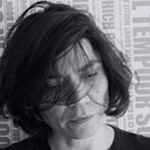
What is the relationship between a book’s cover and its block? Though I enjoy designing posters, I usually fail in designing covers for books, the inner blocks of which are not my work. However, when the process is from the inside to the outside then the very act of designing feels different. Apart from the binding, what other elements bring the inside and the outside to each other?
Esen Karol graduated from Istanbul’s Mimar Sinan Fine Arts University and received her master’s degree in communications design from Pratt Institute, NY, where she was a Fulbright fellow. Between 2003 and 2012 she taught typography and publication design in the Visual Communication Design department at Istanbul Bilgi University. Her posters are in the permanent collection of Zurich’s Museum für Gestaltung. Her works have been published in various design magazines, among them How, IdN, and Slanted. Two of the books that she has designed for Arter, an exhibition space in Istanbul – The Stones Talk (2013) and Through the Looking Glass (2014) – were voted among the 50 best designed books of the year in the 50 Books | 50 Covers competition organised by Design Observer and AIGA. Currently based in Istanbul, she works in her one-person design studio, focusing mainly on digital and analog projects relating to Manifold, an online journal about design, technology, art, and everyday life.


What distinguishes print from online is the cover page. But will it help to save print with the digital revolution upon us? It may come as a surprise but the oldest type of cover, which is illustration-based, might become the most powerful visual tool in this context. Case studies: the world’s best covers, best examples of newspaper and magazine design. What could be the future of information presentation in the media?
Jacek Utko is a graphic designer working in print and web. Among the five newspapers awarded the title of World’s Best Designed Newspaper, four are newspapers that he redesigned, while two of them were also recognised as European Newspapers of The Year. He works as a media consultant, with experience in 24 countries.


When we think about book covers most often we do so from an artistic or an economic perspective. A book cover, however, also represents a certain way of thinking which itself has been heavily influenced by the book as such. I am therefore interested in how form has affected readers’ minds and whether it still does; or perhaps changes in thinking will eventually lead to a different kind of books altogether. It will all start, without a doubt, with the cover.
Kęstas Kirtiklis is a lecturer at the Faculty of Communications and the Faculty of Philosophy at Vilnius University. His interest fields include philosophical issues in media and communications, the role of humanities and their meanings, and the impact of philosophy on daily life. His articles on these subjects have been published in various Lithuanian media outlets and his commentary broadcast on national radio.
Many thanks to our friends!
about us
We like reading, creating and discussing books. We love book creators, publishers, binders and sellers. We believe there is a place under the sun for books both printed and digital.
We’re always open to the well-intended! Drop us a line at info@6pt.lt.
